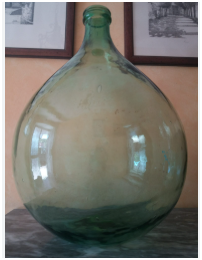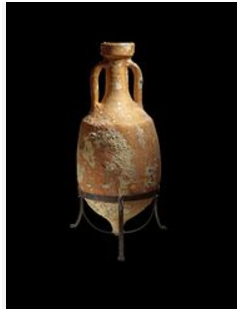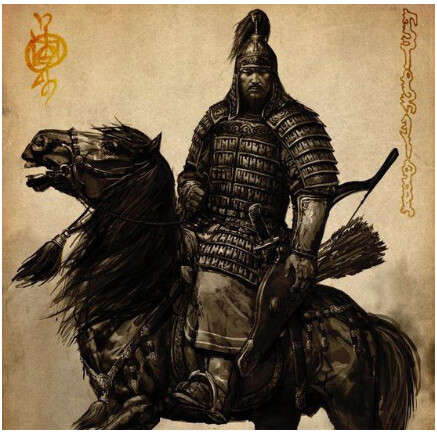This resource I find is a useful discussion and has an Oil Pyramid (a couple of pages after the Food Pyramid).
4 Likes
Aren’t PUFA-dominated oils way more prone to oxidation/rancidity than EVOO? [you should be way more concerned with those than EVOO]. Why does EVOO have a low smoke point compared to these?
Isn’t Kosterina EVOO considered very high quality?
https://www.amazon.com/live/video/0ef8dce39e514837a948d10569c69c98
The difference in smoke points between extra virgin olive oil (EVOO) and refined oils like safflower or sunflower oil comes down to their chemical composition and processing methods:
- Free Fatty Acids (FFAs):
- EVOO is unrefined and contains more FFAs, which break down more easily at high temperatures
- Refined oils like safflower and sunflower have FFAs removed during processing, making them more stable at high heat
- Natural compounds:
- EVOO contains many beneficial compounds like polyphenols and antioxidants
- However, these same compounds can break down at lower temperatures
- Refined oils have most of these compounds stripped away during processing
- Processing differences:
- EVOO is mechanically pressed from olives with minimal processing
- Safflower and sunflower oils go through refining processes that:
- Remove impurities and compounds that lower smoke point
- Filter out particles that can burn
- Neutralize acids that affect heat stability
Typical smoke points:
- EVOO: 325-375°F (165-190°C)
- Refined safflower oil: 450-510°F (230-265°C)
- Refined sunflower oil: 440-450°F (225-230°C)
This doesn’t mean EVOO is inferior - it’s incredibly healthy for low to medium-heat cooking and raw applications. The compounds that lower its smoke point are actually part of what makes it so nutritious.
1 Like
KarlT
#24
Does anyone here eat enough oil that any of this is life/health altering?
2 Likes
mccoy
#25
It does seem good, products from Tuscany are often overpriced but this appears to be one of those niche products that are reasonably expensive, it’s organic and they cite the usual range of concentration in polyphenols (pretty high), which varies every harvest. I’m tempted to order it.
I’ve not started yet to explore the world of niche EVOOs, small packages with great flavour, but I’m being prodded by your suggestion, I’m going to get in touch with people who can give me some tips.
2 Likes
mccoy
#26
In central and southern Italy, it was customary to eat vegetables, like tomatoes or others, literally drowned in EVOO (at environment temperature). But now this custom is being lost.
EVOO is also used to cook, sometimes in significant amounts.
Over the years, there have been so many numerous opinions on the best oil for cooking that I forgot them, probably the most updated are those from AlexKChen.
What I would suggest to do with vegetables, is to cook them with little EVOO, then add more uncooked EVOO afterwards.
2 Likes
KarlT
#27
Agreed. I’m sticking with EVOO, and I don’t worry about seed oils because the intake quantity is so low.
2 Likes
I have a shot of EVOO every day that I mix various supplement powders into including piperine, turmeric, NMN, and hyaluronic acid.
2 Likes
Beth
#29
I tried kosternia once, and while it’s supposedly high in polyphenols, and while it was definitely decent, to my tastebuds, it wasn’t nearly as nice as the EVOO I was using at the time which was priced similarly. The one I was using has become too expensive, so I’m currently on the hunt.
I did just order a non EVOO to have around when I need something neutral with a really high smoke point (over 500). It’s Algae Cooking Club. It was on sale at thrive market for 13.95.
@mccoy I’ll look forward to seeing if you wind up having more tips and recommendations. And ha on the Italians. I was at someone’s house recently who also has a house in Italy, and I was raving over their food. They said it’s because we do things the Italian way and drown everything in good olive oil!!! In order to reduce my oil consumption, as you suggested, I cook with as little oil as I can get away with and then drizzle some on top afterwards. I’d be a much better cook if I used more oil and salt!!
EDIT:
Hold the presses!!! It says algae oil has 75% less sat fat than EVOO… this might mean I can use it a little more liberally… more research is needed to see if there is a downside, but my arteries are excited!!
1 Like
A_User
#30
Yes, it was a top choice for Blueprint enthusiasts awhile back, but it was hard to find what it was called again. The taste surprised me, but I’ve had higher quality EVOO’s in the past and it’s all well regulated so I don’t think I’ve had fraudulent EVOO up to this point.
I don’t remember where he’s from but Luigi Fontana has suggested his grandma barely used EVOO or wine, much smaller amounts than pouring it over, and the diet which people researchers associated with healthy was in the 60’s or earlier in the Med.
At the same time using a lot of EVOO tastes great so if it’s calorie dense can combine it with nutrient but low calorie dense foods.
I think the largest benefit of the diet has been decreasing apoB by their choice of fat. Luckily I have only used EVOO my entire life, only recently dabbled a bit with canola oil. No cooking with butter or similar things.
2 Likes
mccoy
#31
Luigi Fontana and Valter Longo, two eminent gerontologists, are both from Italy. Longo recommends liberal amounts of EVOO (until calorically feasible), whereas Fontana, I just don’t remember.
In Italy, EVOO was used in coastal and hillside areas, whereas in mountainous regions the available fats were butter and lard. I can imagine that EVOO was used sparingly in the past because there was no wealth in Italy, it was pretty hard to end the day with a full stomach and the stock of EVOO had to last until next harvest.
3 Likes
mccoy
#32
And, a curiosity I just found, this topic sent me back over 50 years. The traditional container for EVOO in my region was this one, glass, usually 5 to 10 liters, stocked into cool basements in the dark. Later on, steel containers became usual. The bag in box package is very recent.

And, if we want really go waaay back in time, something like two thousands years ago, the usual container for EVOO in the Roman empire was this one. Cooked clay.

5 Likes
A_User
#33
Can’t go a long time without thinking about the Roman Empire. 
1 Like
Observational studies should be a low quality reason for changing the diet. It’s interesting but I would love to see robust RCTs to confirm these findings.
In my case, I’ve read and I’ve also seen in my biomarkers that Omega 3s help me with many things.
mccoy
#35
Yes, Mr. Musk’s more recent fixation, apparently.
I wonder why its fascination. The Mongol Empire commanded far more land. Subutai, its top general, surpassed all Roman generals in sheer conquest.

But the Roman empire was the one which lasted longer I reckon, a few centuries.
I used to love history.
1 Like
My favorite Mongol fact is that they did not believe in bathing and would only change clothes when they disintegrated. Probably their key to military success was overcoming their enemies with the foulest stench known to man when they engaged in hand to hand combat.
Mongols refused to wash because they believed that very powerful spirits lived in the rivers and streams, and if they polluted the water by bathing in it, it would offend the spirits. For the same reason, they would never wash their clothes or eating vessels.
2 Likes
mccoy
#37
I didn’t know that. The Mongol law in some period, certainly during Ogedei, was not to wash in rivers during the day, but at night it was allowed, probably because streamwater was collected during the day. Many stories are told and who knows which ones are reliable.
There is also the story about the man who plunged in the day and was taken before the emperor, Odugai. that was pretty common in medieval times, not washing much. I think if we could step back in time we would be overwhelmed by the stench, everywhere, except full in the open air and far from other people
1 Like
hamtaro
#38
Are there any disadvantages to using non-refined Avocado oil for cooking at high temperatures? I do this for frying foods.
Does anyone eat artichokes drowned in sunflower oil? Those come in glass jars and are at every American supermarket like trader Joe’s
But I need to know if the oil is like… not rancid
mccoy
#40
That’s a favourite preserved food in the Italian tradition (carciofini sott’olio), sometimes they are made at home, a pretty lengthy process, cutting artichokes, boiling them in a pot with vinegar and lemon, boiling the jars, dripping the artichokes, then drown them in the jar with oil (EVOO in households, sunflowers commercially). I think the high concentration in tocopherols avoids oxydation, you can be almost 100% sure until expiration, barred air bubbles or a faulty process.
I would let the artichokes drip well before eating them.

4 Likes